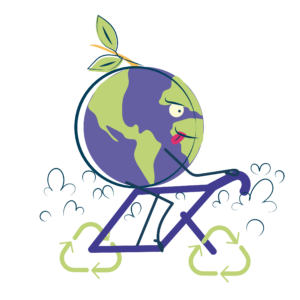
Asequibilidad: La asequibilidad del agua potable se refiere al esfuerzo de un sistema de agua potable por suministrar agua a la comunidad a un precio razonable, mientras continúa recibiendo los ingresos necesarios para mantener sus operaciones.
Agua insalubre: Agua contaminada que causa daño a la salud.
Agua salubre Agua: apta para el consumo humano, incolora e inodora, oxigenada, libre de bacterias patógenas.
Casquetes polares: Grandes masas de hielo que abarcan 10 por ciento de la superficie terrestre y reciben el nombre de glaciares de casquete. Un glaciar es una gruesa masa de hielo que se forma sobre la superficie terrestre por la acumulación, compactación y recristalización de la nieve.
Comunidades microbianas: Consisten en poblaciones de células de varias especies (bacterias); que interactúan entre sí desarrollando múltiples actividades funcionales al interior de la comunidad y con su hospedero.


Estrés hídrico: Se habla de estrés hídrico cuando la demanda de agua es más alta que la cantidad disponible durante un periodo determinado o cuando su uso se ve restringido por su baja calidad.
Ebullición Climática: Implica que la crisis ambiental y el efecto invernadero derivado alcanzaron “un punto crítico” que provoca una causa de eventos ambientales extremos, cambios drásticos en el clima y el derretimiento acelerado de los casquetes polares, según la Organización de las Naciones Unidas (ONU).
Efecto invernadero: El efecto invernadero es la forma en que el calor queda atrapado cerca de la superficie de la Tierra por los “gases de efecto invernadero”. Los gases de efecto invernadero ocurren naturalmente y son parte de la composición de nuestra atmósfera. Pero en el último siglo, los seres humanos han estado interfiriendo con el equilibrio energético del planeta, principalmente a través de la quema de combustibles fósiles que agregan dióxido de carbono al aire. El nivel de dióxido de carbono en la atmósfera de la Tierra ha estado aumentando constantemente durante décadas y atrapa el calor adicional cerca de la superficie de la Tierra, lo que hace que aumenten las temperaturas.


Hidroponía: La Hidroponía se deriva de las palabras en griego Hydro (agua) y Ponos (labor o trabajo), por lo que literalmente significa trabajo en agua. En la práctica, la técnica hidropónica incluye todas las formas de cultivar plantas sin el uso de la tierra, utilizando como medio de siembra y crecimiento un material sólido (Arena, turba, perlita, etc.) o el agua.
Huella de carbono: Es un indicador ambiental que representa la cantidad de emisiones de gases de efecto invernadero que se emitieron a la atmósfera por medio de alguna actividad humana, que puede ser un producto o un servicio, o por la acción diaria de un habitante. Además, ayuda a ampliar la conciencia de conservación de recursos naturales, para alcanzar el desarrollo sustentable.


Inocuo: De acuerdo con la Real Academia Española, la definición de inocuo se refiere a aquello “que no hace daño”. Se define como la característica que garantiza que los alimentos que consumimos no causan daño a nuestra salud, es decir, que durante su producción se aplicaron medidas de higiene para reducir el riesgo de que los alimentos se contaminen.
Obsolescencia Planificada: Es la acción intencional que hacen los fabricantes para que los productos dejen de servir en un tiempo determinado. Esto ocurre porque los fabricantes calculan y planifican el tiempo de vida de sus productos, con el objetivo de reducir deliberadamente su utilidad y con ello incitar a las personas a comprar uno nuevo.

Horario:
Lun - Vie:
8:00 AM - 4:00 PM
Sábado:
9:00 AM - 2:00 PM
Domingo:
Cerrado
Calle Heroico Colegio Militar 177, Centro, Zihuatanejo, Gro. 40890
Contactanos:
(755) 554 5111 y (755) 554 2224
uatencion@capaz-zihua.gob.mx



We firmly believe that the internet should be available and accessible to anyone, and are committed to providing a website that is accessible to the widest possible audience, regardless of circumstance and ability.
To fulfill this, we aim to adhere as strictly as possible to the World Wide Web Consortium’s (W3C) Web Content Accessibility Guidelines 2.1 (WCAG 2.1) at the AA level. These guidelines explain how to make web content accessible to people with a wide array of disabilities. Complying with those guidelines helps us ensure that the website is accessible to all people: blind people, people with motor impairments, visual impairment, cognitive disabilities, and more.
This website utilizes various technologies that are meant to make it as accessible as possible at all times. We utilize an accessibility interface that allows persons with specific disabilities to adjust the website’s UI (user interface) and design it to their personal needs.
Additionally, the website utilizes an AI-based application that runs in the background and optimizes its accessibility level constantly. This application remediates the website’s HTML, adapts Its functionality and behavior for screen-readers used by the blind users, and for keyboard functions used by individuals with motor impairments.
If you’ve found a malfunction or have ideas for improvement, we’ll be happy to hear from you. You can reach out to the website’s operators by using the following email
Our website implements the ARIA attributes (Accessible Rich Internet Applications) technique, alongside various different behavioral changes, to ensure blind users visiting with screen-readers are able to read, comprehend, and enjoy the website’s functions. As soon as a user with a screen-reader enters your site, they immediately receive a prompt to enter the Screen-Reader Profile so they can browse and operate your site effectively. Here’s how our website covers some of the most important screen-reader requirements, alongside console screenshots of code examples:
Screen-reader optimization: we run a background process that learns the website’s components from top to bottom, to ensure ongoing compliance even when updating the website. In this process, we provide screen-readers with meaningful data using the ARIA set of attributes. For example, we provide accurate form labels; descriptions for actionable icons (social media icons, search icons, cart icons, etc.); validation guidance for form inputs; element roles such as buttons, menus, modal dialogues (popups), and others. Additionally, the background process scans all of the website’s images and provides an accurate and meaningful image-object-recognition-based description as an ALT (alternate text) tag for images that are not described. It will also extract texts that are embedded within the image, using an OCR (optical character recognition) technology. To turn on screen-reader adjustments at any time, users need only to press the Alt+1 keyboard combination. Screen-reader users also get automatic announcements to turn the Screen-reader mode on as soon as they enter the website.
These adjustments are compatible with all popular screen readers, including JAWS and NVDA.
Keyboard navigation optimization: The background process also adjusts the website’s HTML, and adds various behaviors using JavaScript code to make the website operable by the keyboard. This includes the ability to navigate the website using the Tab and Shift+Tab keys, operate dropdowns with the arrow keys, close them with Esc, trigger buttons and links using the Enter key, navigate between radio and checkbox elements using the arrow keys, and fill them in with the Spacebar or Enter key.Additionally, keyboard users will find quick-navigation and content-skip menus, available at any time by clicking Alt+1, or as the first elements of the site while navigating with the keyboard. The background process also handles triggered popups by moving the keyboard focus towards them as soon as they appear, and not allow the focus drift outside of it.
Users can also use shortcuts such as “M” (menus), “H” (headings), “F” (forms), “B” (buttons), and “G” (graphics) to jump to specific elements.
We aim to support the widest array of browsers and assistive technologies as possible, so our users can choose the best fitting tools for them, with as few limitations as possible. Therefore, we have worked very hard to be able to support all major systems that comprise over 95% of the user market share including Google Chrome, Mozilla Firefox, Apple Safari, Opera and Microsoft Edge, JAWS and NVDA (screen readers), both for Windows and for MAC users.
Despite our very best efforts to allow anybody to adjust the website to their needs, there may still be pages or sections that are not fully accessible, are in the process of becoming accessible, or are lacking an adequate technological solution to make them accessible. Still, we are continually improving our accessibility, adding, updating and improving its options and features, and developing and adopting new technologies. All this is meant to reach the optimal level of accessibility, following technological advancements. For any assistance, please reach out to